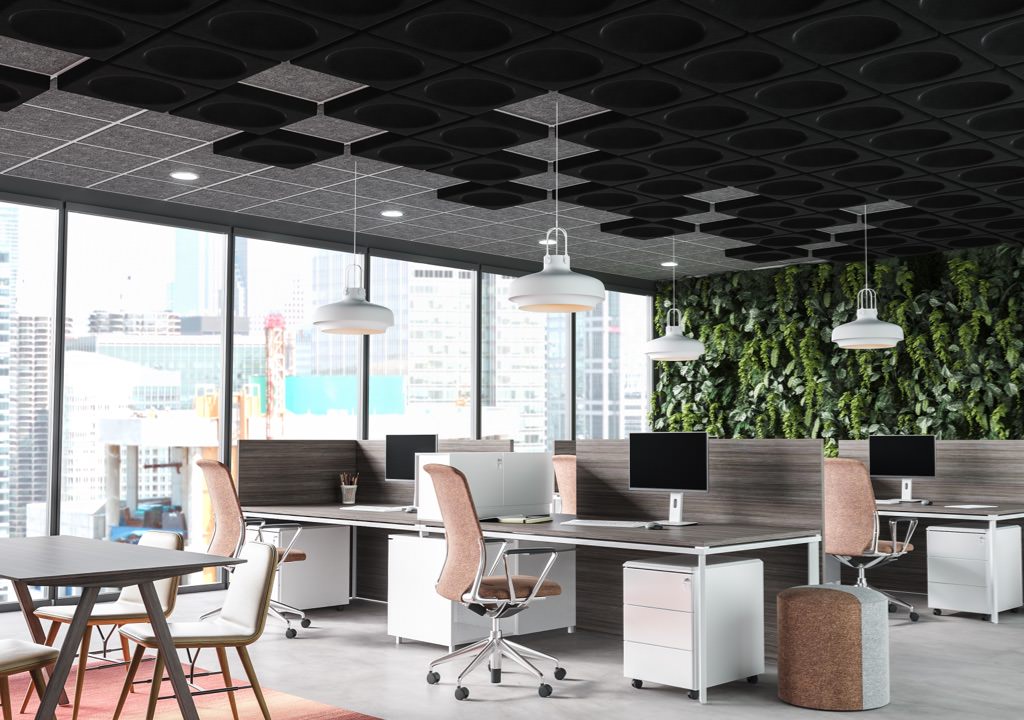Improve Your Room: Acoustic Solutions for Improved Noise Top Quality
Improve Your Room: Acoustic Solutions for Improved Noise Top Quality
Blog Article
Attain Perfect Harmony in Your Home With Effective Soundproofing Approaches for Optimal Acoustics
Soundproofing plays an important duty in accomplishing ideal acoustics, affecting the way we experience and connect with our living rooms. By understanding the fundamentals of soundproofing, recognizing sources of sound disruptions, choosing ideal products, and applying tested techniques, you can transform your home into a shelter of tranquility where audio boosts instead than disrupts.

Understanding Soundproofing Fundamentals
Soundproofing is rooted in the understanding of how sound waves travel and connect with various materials. The key to effective soundproofing exists in interfering with or absorbing these sound waves to reduce their transmission from one area to another.
Recognizing the idea of sound transmission class (STC) ratings is critical in selecting the appropriate products for soundproofing. The STC ranking measures how well a product can minimize air-borne audio transmission through it, with greater STC ratings suggesting far better soundproofing abilities. In addition, taking into consideration the impact of effect insulation course (IIC) rankings for decreasing impact noise, such as steps or furnishings moving, can better boost the performance of soundproofing remedies.
Analyzing Sound Sources in Your Home
Structure upon the fundamental understanding of soundproofing principles, an essential action in efficient sound mitigation within your home includes identifying and analyzing the different resources of unwanted noise. Sound resources can be categorized right into 2 major kinds: airborne sound, that includes noises like conversations, songs, and tv, and impact sound, such as footprints or products being gone down. To analyze these resources, think about the different areas in your house and the activities that generally occur in each. For instance, the living room may have more airborne sound from home entertainment systems, while impact sound from footsteps might be an issue in locations with tough floor covering like corridors or cooking areas.
Additionally, think about external resources of noise, such as traffic, next-door neighbors, or nearby construction, which can additionally influence the acoustics within your home. acoustic solutions. Recognizing these sources will certainly help you focus on areas for soundproofing and select the most reliable options. By determining the details noise resources in your house, you can customize your soundproofing initiatives to attain ideal results and create an extra tranquil and unified living environment
Choosing the Right Soundproofing Products
When selecting soundproofing materials for your home, it is vital to focus on effectiveness and compatibility with your particular noise problems. Consider elements such as the kind of sound you are trying to obstruct, the level of soundproofing needed, and the visual appeals of the products to ensure they mix flawlessly right into your home.
One typical material for soundproofing is acoustic foam. This light-weight and flexible material is excellent for absorbing mid to high-frequency audios, making it suitable for songs spaces, home movie theaters, or offices. Another alternative is mass-loaded vinyl, which is reliable in shutting out low-frequency sounds like traffic or equipment audios. For walls and ceilings, soundproof drywall is a popular selection because of its capability to reduce noise transmission in between spaces.
Curtains and rugs made from sound-absorbing materials are additionally effective in dampening noise, especially in areas with hard surface areas that trigger sound More hints to bounce around. Keep in mind, the key to successful soundproofing is selecting the ideal materials that resolve your particular sound concerns while boosting the total convenience and acoustics of your home.
Executing Soundproofing Strategies
To properly implement soundproofing techniques in your house, it is crucial to start by examining the areas that are More Info most at risk to noise seepage. Common resources of sound can consist of exterior noises from web traffic, next-door neighbors, or neighboring construction, in addition to internal sources like devices, plumbing, and entertainment systems. When you have identified these locations, you can begin applying soundproofing solutions customized to each certain area.

For even more substantial noise reduction, consider mounting soundproof drywall, double-glazed home windows, or resilient networks to isolate resonances. Additionally, repositioning furnishings, including shelfs, or including sound-absorbing products can even more enhance the acoustics of a room. By strategically applying these soundproofing methods, you can produce a quieter and even more serene living atmosphere in your home.
Maintaining and Improving Acoustic Environment
After applying soundproofing techniques to resolve noise infiltration in your home, the focus changes in the direction of maintaining and boosting the acoustic setting to ensure a continually calm home. To maintain ideal acoustics, regularly check soundproofing materials for wear and tear, ensuring they remain effective in blocking unwanted sound. Keep doors and windows properly secured to avoid sound leak and take into consideration including weather condition stripping or door moves for extra soundproofing.
Improving the acoustic atmosphere can involve tactical positioning of furniture, rugs, and curtains to wet audio representations and mirrors. Making use of sound-absorbing materials such as acoustic panels or foam can further enhance the general audio quality in your read this house. acoustic solutions. In addition, integrating soft home furnishings like paddings and coverings can help reduce sound reverberation, developing an extra pleasant auditory experience
Additionally, investing in sound-absorbing decoration aspects like shelfs, tapestries, or plants can add to a well balanced acoustic environment. Consistently decluttering your room can also avoid sound waves from bouncing off surfaces, inevitably enhancing the total acoustics of your home. By constantly maintaining and improving your acoustic atmosphere, you can create a harmonious and serene living room for yourself and your family members.
Verdict
Finally, accomplishing ideal harmony in your home via reliable soundproofing methods is crucial for optimum acoustics. By comprehending soundproofing basics, assessing sound sources, selecting the appropriate materials, executing strategies, and preserving the acoustic setting, you can develop a serene and pleasurable home free from undesirable sound disturbances. Focusing on soundproofing initiatives can dramatically boost the general quality of life in your home.
Report this page